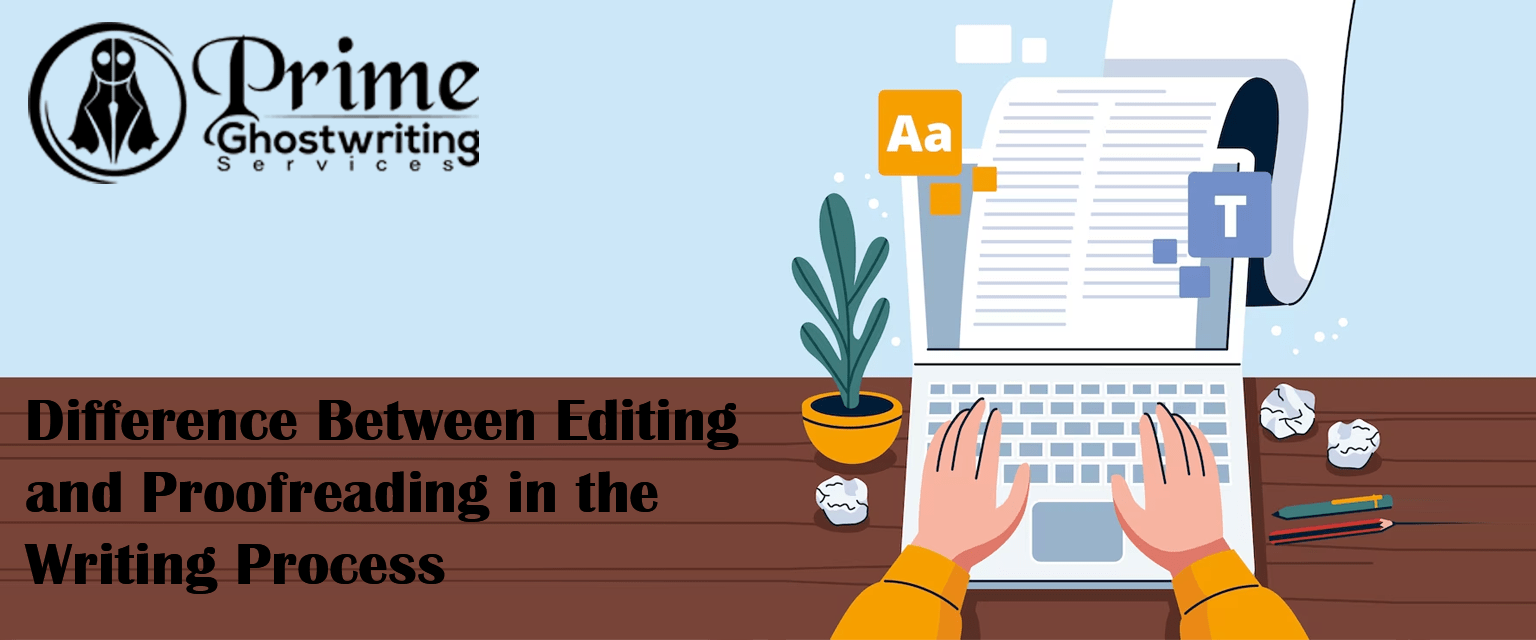Introduction: Defining the Landscape of Editing and Proofreading
In the vast realm of writing, the terms “editing” and “proofreading” often intertwine, leading to confusion among writers and readers alike. In this comprehensive blog, we will embark on a detailed journey to demystify the fundamental distinctions between editing and proofreading. As we delve into the nuances, we will explore the significance of these processes in refining written content. Let’s begin our exploration by dissecting the core differences between editing and proofreading.
I. Differentiating Editing and Proofreading: Unraveling the Complexities
Understanding the Essence of Editing: Shaping the Narrative
Editing, the intricate art of refining a written piece, encompasses a myriad of tasks aimed at enhancing the overall quality of the content. Editors focus on improving clarity, coherence, and consistency. During the editing process, attention is paid to the organization of ideas, the flow of the narrative, and the appropriate use of language. Editors dive deep into the structure of sentences and paragraphs, ensuring that the message resonates effectively with the intended audience. Additionally, editors are responsible for addressing issues related to style, tone, and voice, creating a polished and engaging piece of work.
Decoding Proofreading: Perfecting the Final Draft
Proofreading, on the other hand, is the meticulous examination of a written document to identify and rectify errors related to grammar, punctuation, spelling, and typographical mistakes. Proofreaders possess a keen eye for detail, meticulously scanning each word and punctuation mark to eliminate any imperfections. Unlike editing, proofreading focuses primarily on the technical aspects of writing, ensuring that the final draft is flawless and adheres to the conventions of language usage.
II. Navigating the Complex Terrain: Editing and Proofreading Services
The Role of Professional Editing Services: Elevating the Writing Experience
Professional editing services play a pivotal role in the writing process. Skilled editors bring expertise and a fresh perspective to the table, offering invaluable insights that can transform an ordinary piece of writing into an exceptional work of art. These services encompass comprehensive editing, addressing structural issues, refining language usage, and enhancing the overall impact of the content. Writers collaborating with professional editors benefit from constructive feedback, enabling them to evolve and refine their craft.
The Significance of Proofreading Services: Ensuring Flawless Final Copies
Proofreading services serve as the last line of defense before a written work is presented to the world. Proofreaders meticulously review the document, meticulously checking for grammatical errors, misspellings, and typographical blunders. Their keen attention to detail guarantees that the final copy is impeccable, reinforcing the credibility of the writer and the publication. Professional proofreaders possess an innate understanding of language conventions, ensuring that the document conforms to the highest standards of quality.
III. Debunking Myths: Difference Between Proofreading and Copy Editing
Clarifying the Boundary: Proofreading vs. Copy Editing
One common misconception revolves around the difference between proofreading and copy editing. While both processes involve scrutinizing written content, they cater to distinct aspects of the writing spectrum. Proofreading primarily focuses on surface-level errors, such as spelling and grammar mistakes, ensuring that the document is error-free. Copy editing, on the other hand, delves deeper into the content, addressing issues related to style, coherence, and overall readability. Copy editors refine the language, tighten sentences, and enhance the flow of the narrative, elevating the quality of the writing significantly.
IV. The Interplay of Editing and Proofreading: Crafting Masterpieces
Synergy in the Writing Process: Collaborative Editing and Proofreading
In the intricate tapestry of the writing process, editing and proofreading collaborate harmoniously, each playing a crucial role in shaping the final masterpiece. Writers often undergo multiple rounds of editing, where editors provide constructive feedback, guiding the writer to refine their ideas and strengthen their arguments. Once the content is meticulously edited, proofreaders step in to eliminate any lingering errors, ensuring that the document is polished to perfection.
Writing Process Editing: A Cyclical Journey of Improvement
The writing process, inherently iterative, embraces editing as an integral component. As writers progress through their work, they constantly engage in self-editing, refining their sentences and paragraphs to convey their thoughts with precision. Writing process editing involves continuous revisiting of the content, allowing writers to hone their skills and develop a unique voice. It is through this iterative cycle of writing, editing, and proofreading that writers evolve, producing compelling narratives and thought-provoking pieces.
V. Exploring the Synonyms: Another Word for Proofreading
Synonyms Shedding Light: Exploring Alternative Terms
While “proofreading” is the widely accepted term for the meticulous review of written documents, there are synonyms that encapsulate the essence of this process. “Copyediting” and “line editing” are terms often used interchangeably with proofreading, signifying the detailed scrutiny of written content. However, it is essential to note that these terms, while similar, may entail slightly different scopes of work based on specific contexts and requirements.
Conclusion: Embracing the Artistry of Editing and Proofreading
In conclusion, understanding the subtle yet significant disparities between editing and proofreading is paramount for writers striving to enhance the quality of their work. By recognizing the unique roles of editing and proofreading, writers can harness the full potential of these processes, transforming their ideas into eloquent masterpieces. Whether collaborating with professional editing services or embarking on the self-editing journey, writers armed with this knowledge can embark on a path of continuous improvement, crafting compelling narratives that captivate readers and leave a lasting impression. Editing and proofreading are not just tasks; they are art forms that elevate writing to unparalleled heights, shaping the literary landscape with finesse and precision.

